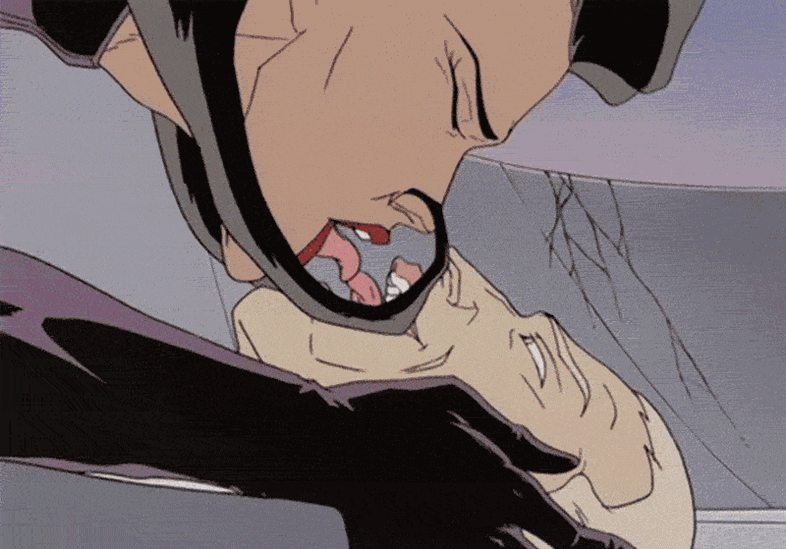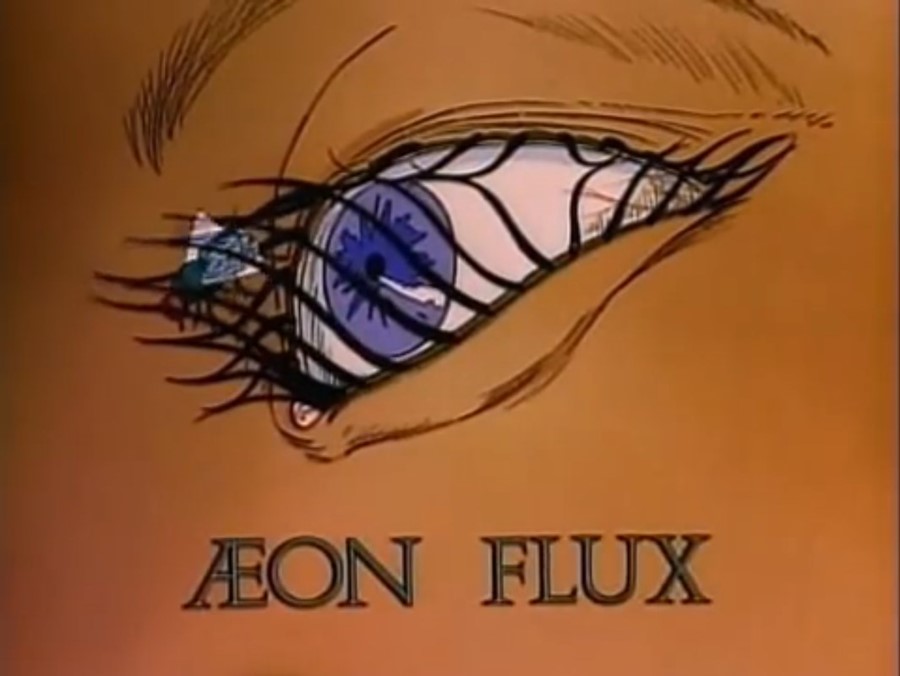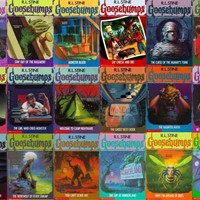The unique animated series should be remembered for its futuristic sex and progressive depictions of gender in a dystopian setting
One of the trippiest, most philosophical, and kinkiest adult cartoons ever was made by a guy who co-designed Rugrats. In 1991, after an epiphany about the artistic restrictions that come with working on a kids’ show about uncanny babies, animator Peter Chung created Aeon Flux. He wanted an animation that could have the same “formal complexity” as works by Borges and Nabokov. The result: an erotic avant-garde sci-fi cartoon about the titular sultry anarchist spy with a penchant for dominatrix outfits and dying repeatedly locked in an eternal game of wits and will with her dictator lover.
Aeon Flux made her appearance on MTV’s experimental animation showcase Liquid Television. The first thing anyone saw her do was catch a fly with her eyelashes, an opening so iconic it would be immortalized many more times — on the show’s DVD cover, in the awful Hollywood adaptation starring Charlize Theron, and on the skins of many devoted fans. Every episode revolved, more or less, around Aeon trying to screw with the efforts of her lover-nemesis Trevor Goodchild to govern his city-state of Bregna. Of course, it would never be that simple, with episodes turning into thought experiments that involved recreational amnesia, artificial consciences, a Gnostic deity, and lots of surreal, futuristic sex. 25 years after its debut, Aeon Flux has held up remarkably well — remaining relevant in 2016 through its progressive depiction of sex and gender, dystopian satire, and mesmerizing art.
THE ART
Aeon Flux should be used as proof to Hollywood executives that we prefer our future in drag. Just look at the Mad Max franchise, with its high-octane opulence stolen from street racing culture and glam rock. Or the entire genre of cyberpunk, an aesthetic we find so seductive we try to replicate it as much IRL as we do on Hollywood sets. Sterile futures decorated with IKEA knock-offs bore us. They require loud plots and ethical conundrums, whereas the Harajuku trashfires of Chappie, Sucker Punch, and MCR’s entire Fabulous Killjoys era can exist solely as stupid fun. The ‘90s knew this and combined the two with smart, critical eye candy like Transmetroplitan and Aeon Flux.
Everything and everyone in Aeon Flux is incredibly fun to look at. The character design is very Fifth Element drawn by Egon Schiele: most people are emaciated and bedazzled with extra ribs and weaponized cheekbones, committing physically dubious crimes in costumes that might as well have been designed by Gaultier. The sexy Squidwards of the ‘90s, anyone unreasonably gorgeous ends up as the butt of some tar-black gag. Chung said he explicitly took inspiration from European comics drawn by greats like Moebius and Druillet — artists who rendered the future in hyper-saturated and surreal detail.
THE DYSTOPIA
All this makes for a very pretty, if slightly fucked up, dystopia that is a little too spot-on in 2016. Aeon Flux is essentially a love story about a head of state and a terrorist who treat human beings, gods, genetics, and political consequences as afterthoughts. Pretty apt for an era sliding giddily into collapse, when selfishness is both an all-encompassing insult and status symbol and learned helplessness is not just de rigeur but a bonding ritual.
Futuristic fiction has always been used to satirise the status quo in a way that doesn’t hurt too much. But Aeon Flux’s future is cynical and astute in a way most fictional dystopias simply cannot capture about our time. Even the ostensibly gritty Mad Max: Fury Road is really just T-shirt feminism decked out in post-apocalyptic grime and Dredd a police propaganda piece masquerading as self-aware Funny Games-style critique. The worst offenders are dystopian YA fiction, which hide naivety and idealism beneath a veneer of vague stick-it-to-the-man edge. The worlds of The Hunger Games, The Maze Runner, and Divergent are so popular because they require absolutely no critical thinking beyond a self-congratulatory defence of individuality. They’re victim porn for first-world teenagers who depict their democracies as totalitarian regimes because they were once subjected to a dress code.
“25 years after its debut, Aeon Flux has held up remarkably well—remaining relevant in 2016 through its progressive depiction of sex and gender, dystopian satire, and mesmerizing art”
Weirdly, Aeon Flux managed to lampoon these works before they were even published. Life in the hedonistic Bregna is actually pretty great. Trevor treats his citizens as test subjects mostly for their own good and not as transparent plots to exert control (this is instead a huge issue in his interpersonal relationships). He would rather govern his subjects via ideas (like encouraging public nudity in a public campaign towards transparency), forced to introduce brutal measures only by his staff. Meanwhile, Aeon is explicitly called a “terrorist,” compared to the sexy euphemism of “the resistance” in dystopian YA fiction, and her anarchic ideology is treated as egotistical and immature. In fact, a defector actually comes back to Bregna, having realised Aeon’s anarchist state of Monica was an overhyped shithole held together by duct tape and downmarket fetish gear. And even his fellow defector admits that Bregna citizens have it great, persisting in her escape attempts only out of pride.
The best dystopian satirists, like J.G. Ballard and Ray Bradbury, refuse to breastfeed the audience any cautionary tales about morality or the future. They instead suggest, with a shrug, that people are complicit in their own shitshows, assisted rather than caused by technological advancements. Aeon Flux does this in spades.

THE PORTRAYAL OF SEX AND GENDER
Ahead of its time (and, sadly, still progressive for ours) as well is Aeon Flux’s portrayal of sex positivity, kink positivity, and gender. Aeon’s promiscuity isn’t portrayed as a moral failure or an act of empowerment, but a matter of fact. Meanwhile, none of Trevor’s sexual appetites, which skew towards questionable, escape criticism. His “partners” include a clone of Aeon (because he couldn’t have the real Aeon), a humanoid bird creature (sex slave), an alien (white saviour complex and exotification), and a subordinate/patient (power imbalance).
Aeon Flux’s portrayal of non-vanilla sex is also good enough to earn it a place on the (admittedly tiny) pantheon of good kinky media like Secretary, You and the Night, and Belle du Jour. All consensual fetishes (of which there are many) are normalised, with the main character as an out domme. Fetish attire abounds and at time doubles as a shorthand for moral discipline. Most explicitly, one character satirises societal stigma against kink by listing domination and humiliation among a list of “crimes” that include false advertising and corporate spying. People of colour and disabled people aren’t fetishized at all.
And, rare for the ‘90s and now, there aren’t any sexist stereotypes, not even in the guise of critiquing said stereotypes. Trans issues aren’t directly addressed but aren’t subjected to transphobia either — there’s one scene with male pregnancy and another where Aeon and Trevor debating the gender of a sexless alien is treated as holding back their species. The only problem may be the portrayal of queerness. The majority of relationships and sex scenes are heterosexual, with the only incidence of bisexuality (between Aeon and a translator) portrayed as incidental and implicit.
But as topical as Aeon Flux is, it probably wouldn’t be greenlit today. The critically acclaimed adult cartoon du jour (Rick and Morty, Archer, BoJack Horseman) is a dark comedy that treats universal and personal pain like mental illness, addiction, and dysfunction with an acerbic understanding. There’s no market for adult animation that isn’t strictly comedic. And in a time when a lot of comedy is nihilistic memes, Aeon Flux’s humour can come off as out of touch. It’s too obviously self-clever, too assured, too deadpan. Most of the one-liners are either meta (“I’m not in the habit of arguing over red herrings”) or delivered by an evil genius dictator who uses the world as his petri dish and bitches about the everyday irritations faced by an evil genius dictator who uses the world as his petri dish.
If made today, Aeon Flux would probably be a futuristic Mr and Mrs Smith parody that takes place primarily in Aeon and Trevor’s respective therapists’ offices, the lead characters reduced to a 9-to-5 terrorist and dictator who can’t wait to clock out each day. Which removes everything that made it so fun and enduring.




